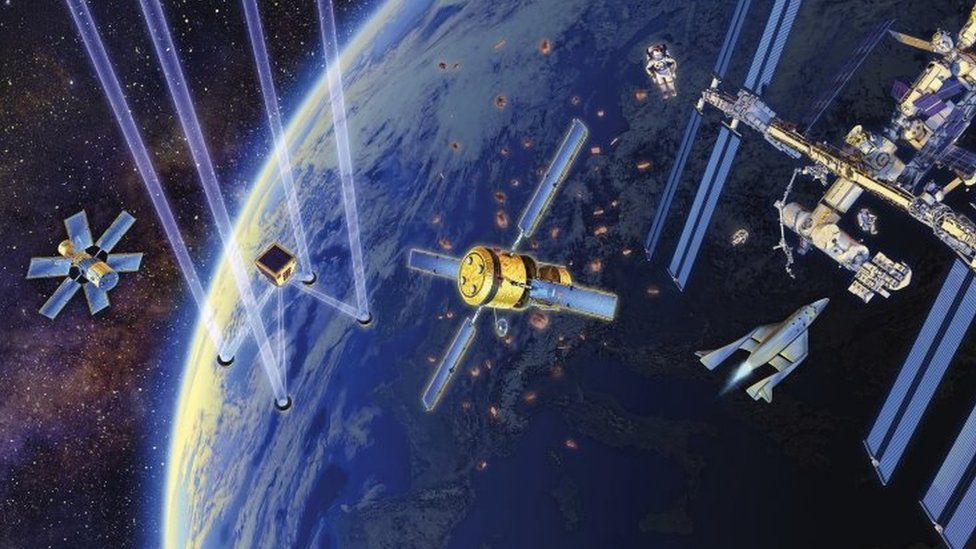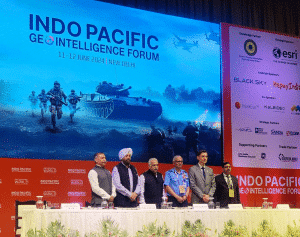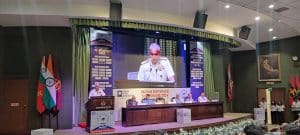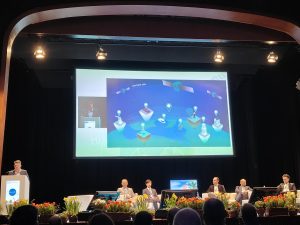Precision improves the prospects of military success and, certainly in NATO’s eyes, reduces the risk to the innocent. In my earlier piece, I discussed some of the lessons from Ukraine, particularly around partnerships and collaboration.
One lesson identified by the Royal United Services Institute’s 30th November 2022 special report examining preliminary lessons from Russia’s invasion of Ukraine, is the ‘right to precision’. [1] How is precision obtained? More than we like to think by Global Navigation Satellite System (GNSS). What is the prime means of degradation? Through electronic warfare (EW).
Position, Navigation, and Time (PNT) is the foundation of all GEOINT and much more besides across the military and civilian domains. The term GNSS is used here as, whilst some readers will be more familiar with the US Global Positioning System (GPS), GNSS also embraces similar services, such as the EU’s Galileo, Russia’s Glonass, and China’s BeiDou. Many systems and devices can take signals from several different services.
At the national level, agreeing and making available global, national, and coalition geodetic and reference systems is fundamental to data integration, autonomy, and precision. Civil GNSS augmentation systems, such as the recently contracted Australia and New Zealand initiative SouthPAN, will offer smartphones with 10cm absolute accuracy.
Precision is not solely for the military. Precise time is critical to the financial markets and precise navigation to many developing autonomous systems (as well as getting paramedics to the right apartment front door).
Disrupting PNT is therefore a potential aim of an aggressor, a tactic Russia has repeatedly deployed. PNT is increasingly considered an element of critical national infrastructure with risks understood and resilience/mitigation considered. Consequently, there is an increasing need for governments to have a national PNT strategy, which should of course include national defense and security considerations.
For Defence, there are considerable numbers of use cases for GNSS in precision targeting. Precision weapons largely rely on it, although they increasingly incorporate other methods such as laser, terrain following, millimetric radar, and inertial guidance systems.
Except for laser, these require precise and accurate up-to-date 3D data, particularly at the target location. Not just of the target but also to assess potential collateral impact. GEOINT supports wider ISTAR too: prediction using GIS and other tools leads to increased prospects of success with high-value targets and the creation of accurate 3D data to support targeting is an indirect outcome of GNSS.
On the flip side, the enemy also uses GNSS for precision; from state-players to lone-actors. Clearly, Defence needs to consider how it uses EW to counter enemy precision.
GNSS denial has led to precision systems with multiple guidance systems operating in a GNSS-denied environment. Historically these have tended towards larger munitions; land and ship-based artillery precision guidance is increasingly common. Tying a precision attack to EW measures is increasingly important where GNSS is the prime precision means.
What does this mean to the DGI community, where we tend not to openly discuss these ‘right to precision’ issues? Firstly, we could look at this to a greater extent during DGI’s ‘Future of the Space Domain focus-day discussions, where attendees have an opportunity to question influential leaders in the domain.
Secondly, we could consider how much, and how, the GEOINT community encourages and influences Defence PNT agendas. Thirdly, delegates could consider whether we want greater focus in this area at a future DGI, engaging with those more involved in precision and counter-precision.
Also Read: Ukraine, Partnerships, and GEOINT
Disclaimer: Views Expressed are Author's Own. Geospatial World May or May Not Endorse it








